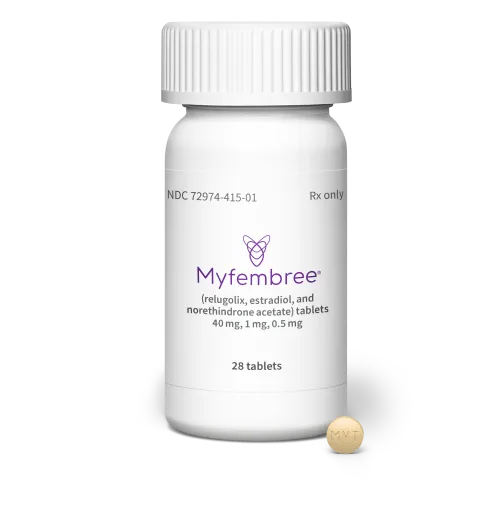
Blocking PD-1 and VEGF: The bispecific cancer drugs that could best Keytruda
Merck & Co.’s cancer immunotherapy Keytruda is one of the pharmaceutical industry’s biggest successes. The drug's arrival in 2014 introduced a new way of treating cancer and, over time, it became standard therapy for a panoply of different tumors. Clinical achievements brought about commercial performance, making Keytruda the world's best-selling medicine.
After the repeated failure of past attempts to improve on Keytruda, a new class of drugs might finally offer a better backbone for immunotherapy's next decade.
Last September, biotechnology companies Summit Therapeutics and Akeso revealed clinical trial results showing one of these drugs significantly outperformed Keytruda. Called ivonescimab, it cut the risk of lung cancer progression in half compared to Keytruda in a Phase 3 study — a result so striking it sparked a wave of investment in oncology research practically overnight.
“This really was a ‘black swan’ event,” said Allen Yang, Summit’s chief medical officer. “It’s clearly what everybody’s been looking for.”
In the wake of Summit’s results, drugs like ivonescimab, which block cell signaling via proteins called PD-1 and VEGF, have become the “new shiny object” in cancer research, according to analysts with the investment bank William Blair. More than a dozen companies, from pharmaceutical giants to newly formed biotech startups, are now developing them.
Proponents see these “PD-1/VEGF inhibitors” as building upon Keytruda and drugs like it, such as Bristol Myers Squibb’s Opdivo. The hope, some say, is they’ll improve response rates, shrink tumors their predecessors can’t and become cornerstone cancer treatments of the future.
“These drugs are going to work,” said David Epstein, the former CEO of Seagen and head of Ottimo Pharma, a startup developing a PD-1/VEGF inhibitor. “The question is, how big is the order of magnitude going to be, and across how many different tumor types?”
Many aren’t as convinced as Epstein. Ivonescimab hasn’t shown it can extend overall survival by more than Keytruda. It wasn’t tested against the Keytruda-chemotherapy combination that’s standard of care in most lung cancers. And the trial demonstrating ivonescimab’s superiority to Keytruda took place only in China, leaving it unclear whether a similar benefit will be observed in broader testing. Those questions hang over not only Summit, but others working on PD-1/VEGF inhibitors, too.
“The jury is out,” said Samit Hirawat, the chief medical officer of Bristol Myers Squibb.
What are PD-1/VEGF inhibitors and how do they work?
Cancer cells are survivalists. They’re adept at siphoning the body’s resources to fuel their rampant growth, and skilled at slipping past immune defenses evolved to stop them. Even when beat back by drug therapies, malignant cells can acquire new abilities to thwart treatment.
Drugmakers and researchers have spent enormous effort studying cancer’s weaponry, uncovering along the way many tools that have improved care. Two breakthroughs from the 1990s helped researchers design protein drugs that can pinch off a tumor’s supply chains and, years later, unleash the immune system against cancerous growth.
In the former case, antibodies that block VEGF, such as Avastin, can stop tumors from forming new blood vessels. The latter kind of antibodies, which are called PD-1 or PD-L1 inhibitors for the proteins that they block, prevent cancer cells from shutting down powerful defenders known as T cells. Keytruda is the most famous example.
Both classes of medicines are now used to treat dozens of tumor types. PD-1 and PD-L1 immunotherapies, also called “checkpoint” inhibitors, are sometimes a patient’s first line of defense after a tumor is surgically removed — or even before.
Developers like Akeso and Summit aim to combine the power of both types of drugs into a single, multi-pronged antibody, typically termed “bispecific” or “bifunctional.” These medicines can interfere with PD-1 and VEGF signaling in ways their makers contend will maximize the benefits and minimize the flaws of their predecessors.
Akeso designed ivonescimab to have a “tetravalent” structure, in theory giving it better binding to PD-1 and to VEGF. Yang, Summit’s CMO, says the simultaneous targeting of both proteins helps increase the affinity the drug has for each.
“We believe that those two features make ivonescimab, and the whole class of PD-1/VEGFs, unique,” he added. “Now people seem to believe us.”
Others have different twists on the concept. BNT327, a drug acquired by German biotech BioNTech, binds to the ligand PD-L1 instead of the PD-1 receptor. A drug licensed by Merck consists of an anti-VEGF antibody fused to two PD-1-targeting antibodies, while Ottimo’s lead program, jankistomig, specifically targets a related protein called VEGF receptor 2.
Crescent Biopharma has a drug its CEO, Jonathan Violin, said on a conference call October was “purpose-built” to mimic the pharmacology of ivonescimab while enhancing its “stability and manufacturability.”
They’re joined by other companies pursuing more variations, such as drugs that block three proteins or use different strategies to block VEGF.
The glut of similar drugs means “many or most of the resulting companies seem unlikely to succeed,” wrote Paul Rennert, the head of consulting firm Sugarcone Biotech, in a February report. Still, Epstein, Ottimo’s CEO, said the sheer size of the commercial opportunity leaves ample room for many to prosper.
“How many PD-1s and PD-L1s are there? How big is the market currently? And how big is it going to be if people live twice as long, or at least twice as long before their cancer progresses?” Epstein said.
What are the advantages over drugs like Keytruda?
Keytruda and other checkpoint inhibitors like it are the standard choice for many tumor types because trial data has shown they can extend lives to degrees that weren’t possible with other cancer medicines.
There’s no better example than in lung cancer. Some studies have shown that, in the years before cancer immunotherapy, the average five-year survival rate for people with metastatic non-small cell lung cancer was around 5%. That rate has climbed since the arrival of Keytruda and its cousins. In Phase 3 testing, around 20% of people given a Keytruda-chemotherapy combination survived at least five years.
Yet that statistic also shows checkpoint inhibitors aren’t panaceas. In lung cancer and other malignancies, they still don’t work well for a good portion of people — particularly those whose tumors express little of the PD-L1 protein that’s linked to an immunotherapy response. They also struggle against so-called cold tumors that don’t tend to provoke as strong immune reactions.
In response, drugmakers have searched for more than a decade to find new immunotherapies that work better, but the hunt has yielded far more failures than successes.
“It’s been one disappointment, honestly, after another,” said Srini Akkaraju, a founder and managing general partner of Samsara BioCapital, and an investor in Ottimo.
Among the approaches tested, with mixed results, were combinations of PD-1 inhibitors together with anti-VEGF drugs. Roche found that pairing Avastin with its immunotherapy Tecentriq improved survival in liver cancer and won an approval in that tumor type as well as lung cancer. Further testing showed a limited survival benefit as well as significant side effects, however. And the combination hasn’t been as broadly successful as hoped.
Merck has had a similarly uneven experience. It has gained clearances of regimens involving Keytruda and the VEGF-inhibiting drugs Lenvima and Inlyta in a few tumors, but these combinations have fallen short in others.
“You see, in many cases, clear evidence of [delaying tumor progression]. But then as we go longer out, we're not able to hit [on survival] as often as we wish to,” said Merck research chief Dean Li, during a conference presentation in January.
At least so far, ivonescimab seems to work more effectively than delivering two separate drugs together. The initial evidence “raises the possibility that there may be some true synergy when the two are combined with a single molecule,” John Heymach, chair of thoracic, head and neck oncology at the MD Anderson Cancer Center, said in a September interview.
Supporters say that will play out with further testing. If they’re right, the “emerging blue sky story” is that these drugs might make immunotherapy useful to more people and against more tumors, wrote Stifel analyst Bradley Canino in a note last year.
More data could burst those expectations, too, though. Bristol Myers’ CMO Hirawat noted how ivonescimab hasn’t yet been proven to extend survival. Moreover, its advantage over Keytruda on tumor progression appeared to shrink after six months. And for earlier-stage drugs also targeting the PD-1 and VEGF pathways, promise in single-arm studies will need to be replicated in more rigorous tests.
“There is some level of additional data that is required,” Hirawat said. “We'll keep an eye on it and continue to look for what the right opportunities are from a scientific perspective, and what we need to continue to learn.”
In their December report, William Blair analysts had a similarly skeptical take. Citing the multiple “disappointing datasets” with checkpoint inhibitor and Avastin combinations, they wrote that developers need more results from global studies and a clear survival advantage to prove these drugs can become “a new standard of care.”
Safety is also a concern. VEGF-blocking drugs are associated with sometimes severe side effects like high blood pressure, bleeding or protein in the urine. In clinical practice, doctors can stop treatment when these instances occur. With a combined therapy, though, “if we see [concerning] proteinuria, then we have to hold the whole drug,” Jyoti Malhotra, director of thoracic medical oncology at City of Hope Orange County, said in a September interview.
Which companies are developing PD-1/VEGF inhibitors?
More than a dozen companies are developing dual-targeting antibodies that block PD-1 or PD-L1 and VEGF in one way or another.
Akeso, a Guangdong, China-based cancer drug developer, originally discovered ivonescimab. Summit got involved in 2022 when it paid Akeso $500 million upfront. And earlier this year, Pfizer and Summit agreed to test ivonescimab alongside some of Pfizer’s targeted cancer medicines in the hopes of finding yet more powerful drug combinations.
BioNTech is best known for successfully developing a COVID vaccine with Pfizer. But the company’s initial focus was in cancer. It bought into PD-L1/VEGF drug development first by partnering with and then last year acquiring Biotheus, a cancer biotech based in Zhuhai, China.
Instil Bio went public in 2021 to fund work on cancer cell therapy. But manufacturing issues led the company to restructure and, last August, it licensed partial rights to a PD-L1/VEGF drug from Shanghai’s ImmuneOnco Biopharmaceuticals.
Ottimo Pharma was formed in 2020 by U.K. venture firm Medicxi and prolific biotech founder and former Pfizer researcher Jonny Finlay. The company emerged from stealth in October with Epstein, a former Seagen and Novartis executive, as its CEO and raised $140 million in Series A funding two months later. Ottimo’s lead prospect is a bifunctional antibody, meaning its “arms” can interact with both of its targets.
Crescent Biopharma spun out of Paragon Therapeutics last year armed with a PD-1/VEGF prospect and two other medicines. In October, it merged with struggling drug developer GlycoMimetics, giving the company enough cash to fund operations into 2027.
Merck in November paid $588 million for worldwide rights to a PD-1/VEGF drug discovered by Shanghai-based LaNova Medicines.
Joining them are at least 12 more companies, many of which of are based in China, reflecting a fast-advancing biotech sector there that’s created a broad pipeline of drug candidates in competitive areas of pharmaceutical research.
“They all have little variations. They all have a reason to be best in class,” said Yang, Summit’s CMO, of the medicines following ivonescimab. “But we think ours has all the features that are important, and that have been proven to be important.”
Select companies developing PD-1/VEGF inhibitors
| Company | Drug | Status |
|---|---|---|
| Summit Therapeutics / Akeso | ivonescimab | Phase 3 studies ongoing in lung cancer |
| BioNTech | BNT327 | Phase 3 studies ongoing in lung cancer; Phase 2 study ongoing in triple-negative breast cancer |
| Instil Bio | AXN-2510 | Phase 1/2 ongoing in lung cancer |
| Merck & Co. / LaNova Medicines | MK-2010 / LM-299 | Phase 1 testing ongoing |
| OncoC4 | AI-081 | Phase 1/2 testing starting |
| Ottimo Pharma | jankistomig | Preclinical; Phase 1 testing expected in late 2025 or early 2026 |
| Crescent Biopharma | CR-001 | Preclinical; Phase 1 testing expected in Q4 2025 |
| Compass Therapeutics | CTX-10726 | IND expected by end of 2025 |
SOURCE: Companies
What is the status of their research?
The study result that set many of these investments in motion was signaled last May, when Summit trumpeted that ivonescimab had “decisively” beaten Keytruda in a Phase 3 trial. Details revealed at a medical meeting six months later backed up that claim, as ivonescimab kept tumors from progressing for a median of almost half a year longer than Merck’s medicine without an accompanying uptick in side effects.
The data “are really quite striking,” said Heymach, of MD Anderson, at the time.
Overall survival results from that study could be revealed later this year. Also coming in 2025 are data from a global, Phase 3 study in a subset of non-small cell lung cancer patients with so-called EGFR mutations that could prove ivonescimab is “equally safe/effective” in people outside of China, Stifel’s Canino wrote in February. An additional Phase 3 trial this year headed by Akeso could point to the type of benefit treatment offers on top of chemotherapy.
“We are watching carefully,” Merck’s Li told analysts in November.
BioNTech has reported promising early results for BNT327 in several tumor types, among them an aggressive and tough-to-treat form of breast cancer. Going forward, it intends to combine BNT327 with a variety of different medicines and has registrational trials either ongoing or planned in lung and breast cancer. Several Phase 2 readouts are expected in 2025.
The drug could be a “foundational component in the treatment regiment for multiple cancer types,” CEO Ugur Sahin told analysts last year.
Several others chasing Summit and BioNTech are either just starting human testing or soon will be.
Instil Bio should report results from an early-stage trial in lung cancer in China, and start a similar type of trial in the U.S., later this year. Merck’s prospect was in a Phase 1 trial in China when licensed from LaNova. Merck aims to explore its use in multiple tumor types, but hasn’t been specific.
Crescent could start testing in the fourth quarter and report early data in 2026. Ottimo, too, has said it should begin a trial in late 2025 or early 2026.
By then, the study that could establish how much of an advance PD-1/VEGF inhibitors really are will be well underway. Dubbed Harmoni-3, that trial has already begun enrolling what’s expected to be more than 1,000 lung cancer patients, who will receive chemotherapy and either ivonescimab or Keytruda. Initial results are due in 2027, according to a federal database. If positive, they could unlock a market opportunity Stifel’s Canino in March estimated to be worth around $20 billion.
“Keytruda is the biggest oncology drug in the world,” said Akkaraju, of Samsara. “Is this finally the thing that unseats it? It’s quite possible.”
Gwendolyn Wu, Jonathan Gardner and Ned Pagliarulo contributed reporting.








